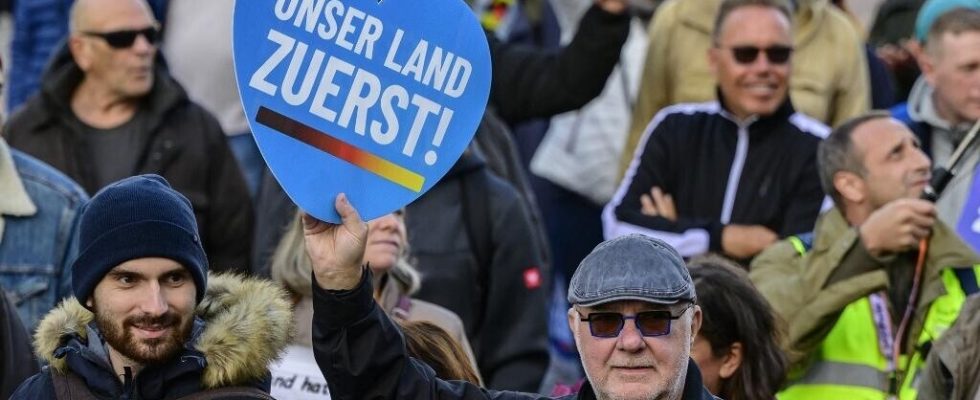On Wednesday August 16, the German Federal Ministry of the Interior published a report showing a very clear increase in far-right parades in the country. Their number tripled in the first half of 2023, compared to the same period the previous year, rising from 35 to 110. Decryption with Patrick Moreau, political scientist specializing in extremism in Germanic countries.
2 mins
RFI: In 2015, the crisis in the reception of refugees had allowed a push by the far-right Alternative für Deutschland (AfD) party. Is there a parallel to be drawn with today?
Patrick Moreau: A certain part of the population feels fed up with the current migration policy. First, there was the arrival of 400,000 Afghans [consécutive à la prise de pouvoir du pays par les talibans en août 2021, NDLR]. And more recently, very many Turks arrived in Germany after the earthquake last February. Without forgetting Ukrainians who are fleeing the war.
Read alsoGermany wants to encourage the immigration of skilled foreign workers
However, the Länder of former East Germany, which are on the front line, are very sensitive to pro-Russian discourse and therefore the Ukrainians are very badly seen. There is an economic crisis affecting these eastern states, and therefore foreigners, who represent competition.
This increase in far-right demonstrations is more concentrated in the former German Democratic Republic (GDR)?
Yes, for several reasons. Already, because in West Germany, far-left groups reportedly prevented neo-Nazis from marching through the streets. They exist only very few in the Länder of the East. And there are fundamental reasons in addition to the economic crisis. There is a feeling of abandonment on the part of the traditional parties. The coalition in place is not satisfactory, the parties that make it up communicate poorly with each other, the conservative right is weak, and Die Linke, a former communist party, is falling apart. So the AfD recovers these disappointed. At the top of the federal state, East Germans are also very poorly represented. This political crisis favors the extreme right.
What is the profile of the people who make up these processions?
There are a lot of radicalized young people. Recent sociological analyzes show that many come from families who have lived in the GDR. Young people arriving on the political market have lived through the stories of parents evoking a society of full employment, living in a happy community. In its ideals, the AfD surfs on this nostalgia, shows itself to be unifying, with socializing ideas. And while historically men were in the majority, there are more and more young women joining these movements. What I have also observed is that behind these young people who lead the processions, at the back of the pack, there are older, former anti-racist socialists who switch to the side of national populism. And I don’t see them changing sides again.
